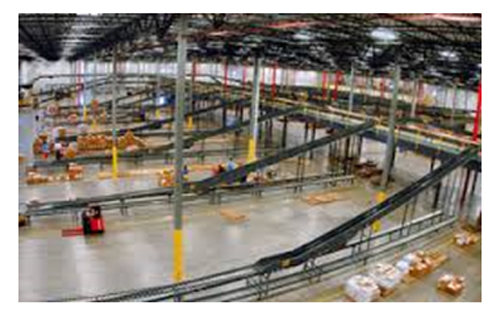Holste Says: |
 |
| While the automation adoption rate is growing, improved warehouse and distribution center productivity remains a goal for some companies, not a reality. |
|
What Do You Say?
|
|
|
|
Previous Columns by
Cliff Holste |
|
|
With multiple DCs, complex supply chains and marketing channels, high capacity operations are continually searching for ways to do more with less. Consolidation of multiple warehousing and distribution facilities, while cost effective from a square footage perspective, places more pressure on material handling resource, controls and software systems to handle multiple tasks in a high capacity environment. Filling orders placed through multiple channels across a proliferating SKU count keeps DC managers seeking the most efficient storage and retrieval, picking and shipping strategies. For these high capacity operations deploying the latest in automated system technology is critical to maintaining daily operations and growing the business.
Overcoming Perceived Barriers
While large, high capacity order fulfillment distribution centers throughout the USA have adopted some level of automation, small and midsize operations are for the most part not automated. They typically have forklift trucks and perhaps a network of conveyors to assist in moving product to and from various locations and operations within the DC. Most of them are doing a commendable job shipping orders to customers within a few days of order placement. However, their warehousing & distribution operations tend to be less productive when compared to more automated operations. As volumes increase they are forced to add incremental labor to compensate.
For many small to midsize operations, lower productivity is an acceptable trade-off for maintaining high levels of flexibility, agility, and customer service. However, at some level manual methods cannot keep up with demand. Shipping delays begin to degrade efficiency and choke-off growth. Extended working hours and/or adding a second or third shift increases operating cost. It’s a downward spiral that can put the business at risk.
 Automated sorting systems, like the one pictured here, have been available since the 1970’s. Still, many order fulfillment operations have been reluctant to changeover from manual to more automated methods. According to various SCD surveys, while these companies are interested in automation, perceived loss of operational flexibility and agility are the main reason they avoid it. For others cost justification is a factor. Automated sorting systems, like the one pictured here, have been available since the 1970’s. Still, many order fulfillment operations have been reluctant to changeover from manual to more automated methods. According to various SCD surveys, while these companies are interested in automation, perceived loss of operational flexibility and agility are the main reason they avoid it. For others cost justification is a factor.
The fear is that their current manual methods will not scale-up to support order fulfillment and shipping operations as the company grows. They are therefore seeking ways to make their operations more efficient while maintaining high levels of flexibility and agility to satisfy their customers’ increasing requirements for value added services (VAS) and faster response times.
Deploying Automated System Technologies
Most industry experts agree that before a company considers adopting technically complex systems it should examine its core operational areas such as, receiving, put-away, picking, value-added services, order consolidation and shipping to determine how they can be simplified and streamlined. In addition, look for functional improvements in slotting, order batching, pick path routing, and work flow simplification.
Once this is completed, what remains should be stable and consistent enough to automate without excessive complexity and overstated justification. This approach, referred to as incremental implementation, allows for a somewhat easier transition to automation. In addition, an incremental approach allows for adjustments (corrections) to be made before moving on to the next step.
While fear of technology can be a show stopper for some companies, for many others the operational benefits derived from advanced material handling technologies outweigh the challenges associated with managing them. These top performers are leveraging more automation technologies, have better data visibility, and work harder at cross-training their staffs.
|